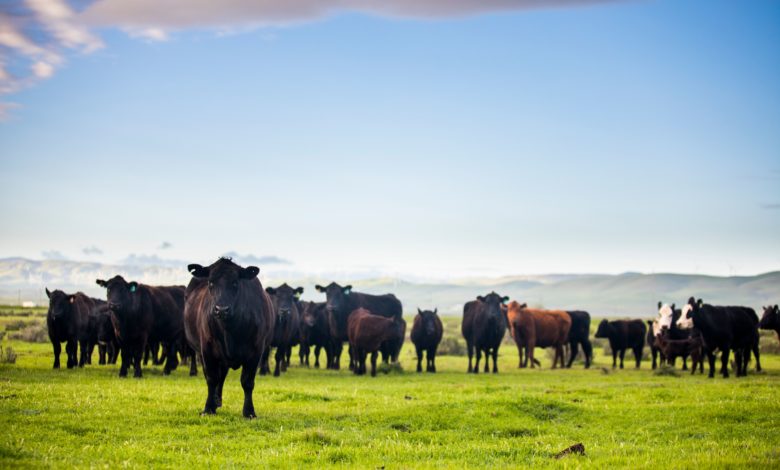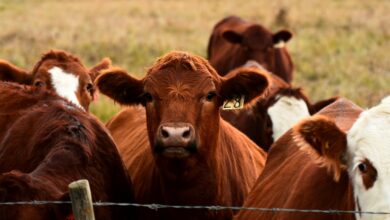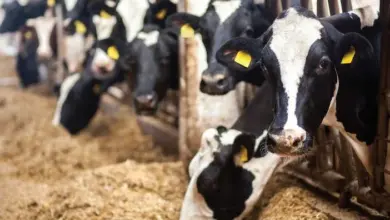
Feeding the world in an new context
Since the 1940’s the livestock market has been restructured to meet the population’s food needs. This intensification phase has been accompanied by great improvement in genetics, housing and other farm practices. Research in animal nutrition also contributed to a deeper knowledge of digestive physiology, requirements, as well as a better knowledge of raw materials and their nutrient contents. Therefore, improvement in animal performance has been remarkable over the following decades. In the field of animal nutrition, livestock performance has also been greatly improved through the supplementation of antimicrobial growth promoters (AGPs) which are antimicrobial agents fed at a non-therapeutic concentration level.
Today, driven by growing population and improved incomes, global demand for livestock products is still forecasted to increase in the coming years. The demand for ruminant protein sources (milk and meat) is intended to grow at a rate of 1–1.5 % annually from 2006-2050. However, consumer expectations have changed and from now on, the forecasted demand is not only quantitative but also qualitative. The livestock sector still needs to increase its production but in a challenging context of sustainability and health expectations from consumers. Indeed, new concerns emerge everyday regarding the environmental impact of agriculture. Effluent management, pesticide use, carbon footprint are daily topics of discussion. Among these concerns, AGPs use is a worldwide issue today due to the emergence of antimicrobial resistance. As AGPs use can potentially compromise therapeutic effectiveness of antimicrobial agent in veterinary and human medicine. The World Health Organization released recommendations to restrict AGPs use. Several countries have already followed this recommendation such as European Union with an AGP ban in 2006.
Antimicrobial resistance: an ongoing challenge
Proposed mechanisms of action of antimicrobial agents are mainly based on a direct antibiotic influence on the microbial composition. In ruminants, ionophores support a shift in the fermentation from acetate to propionate by modifying the bacterial population. As propionate is the main glucose precursor for gluconeogenesis, this increased propionate supply provides more energy to the animal, supporting growth and feed efficiency.
Nevertheless, recent findings have shown that the mode of action of antimicrobial agents is more complex than simply affecting microbial populations. Antimicrobial agents also appear to induce physiological responses by the host and particularly immune responses. A better understanding of the mechanisms of antimicrobial agents will facilitate the development of effective alternatives, which today represents a high request from consumers.
Plant extracts as an alternative
With the objective of finding new alternatives to AGPs’ use, plants extracts appears\ to be an option of interest by displaying antimicrobial properties, but also by their ability to trigger specific receptors inducing host responses. Pancosma, an internationally-renowned Swiss company, pioneered the development of additives based on plant extracts, identified eugenol (from clove bud oil) and cinnamaldehyde (from cinnamon) for their specific properties with proven effect on rumen fermentation. A decrease in the acetate/propionate ratio has been observed with animals fed a combination of these 2 active substances. This change leads to a similar effect as ionophores regarding the volatile fatty acid production. Moreover, it displayed a significant effect on the inhibition of deamination, optimizing the use of the degradable protein fraction by limiting ammonia losses.
Capsicum oleoresin (from red chili peppers) was also identified for its properties. In beef cattle, it induces a change in dietary behavior by altering intake patterns, and increasing salivation. For animals supplemented with capsicum oleoresin, water intake is also higher. These effects are particularly of interest in challenging situations such as heat stress.
Numerous publications have demonstrated the ability of plants extracts to strengthen animal performance. One specific scientific publication displayed results of a meta-analysis in growth and feed efficiency on growing animals fed a mixture of eugenol, cinnamaldehyde and capsicum oleoresin (Bravo et al., 2009). This analysis showed consistent improvements in average daily gain (+2.8%) and efficiency (+2.6%)
Furthermore, a different scientific study was conducted to determine the effectiveness of plant extracts containing capsicum oleoresin, Cinnamaldehyde and eugenol as an alternative to monensin (Hagg et al., 2013). In this study, Average Daily Gain was increased for animals fed plant extracts compared to animals fed monensin. Dry Matter Intake tended to be higher in the plant extract group, and overall performance expressed as feed conversion ratio was not affected. Integrity parameters were also recorded and percentage of cattle with a healthy rumen was improved when animals were supplemented with plant extracts.
| Parameter | Monensin | Plant extracts | P-value |
| End Weight (kg) | 417.5 | 429.3 | 0.01 |
| ADG (kg) | 1.70 | 1.77 | 0.04 |
| DMI (kg/d) | 8.96 | 10.05 | 0.09 |
| Cold carcass (kg) | 242.7 | 247.3 | 0.10 |
Results suggest that plant extracts could be used to replace monensin in commercial beef feedlot diets without impairing animal performance and by improving integrity status of the animals.
Plant extracts use: stability and standardization
The selection and association of plant extracts requires many years of research. Beyond the selection of the components, the dose rate of each extract is decisive. To induce a physiological response, animals must receive the accurate blends of plant extracts at the accurate dosage for each component.
The term essential oils is often used when discussing plant extracts. Essential oils are obtained from the plant volatile fraction by steam distillation. However, for a defined plant, this volatile fraction can be highly variable. Crop conditions, variety, and meteorology can all lead to qualitative and quantitative differences in the composition of essential oils. When using plant extract compounds as feed additives, standardization is therefore a key factor. The exact composition and concentration of active molecules must be known and transparent to ensure the correct dosage for each application.
In the volatile fraction of plants, the most important active compounds are included in 2 chemical groups: terpenoids and phenylpropanoids. As these compounds are highly volatile, a technological process of encapsulation is then necessary to ensure the stability of the components in feeds.
Conclusion
Plants extracts such as cinnamaldehyde, eugenol and capsicum oleoresin appear to be an effective alternative to AGPs, in terms of animal performance. Supplementation of plant extracts requires the use of a standardized and stable product with a transparent and specific composition. Dosage needs to be accurate and aligned with results from scientific studies in order to obtain the targeted effects.
Sébastien Constantin
International Business Manager Bioactives
Sebastien.constantin@pancosma.com
About us
Pancosma, Swiss company headquartered in Rolle, Switzerland, is a global leader in developing, manufacturing and distributing a wide range of innovative feed additives. The company is present in more than 75 countries. Its portfolio consists of phytonutrient-based technologies, organic trace minerals, palatants, yeast and organic acids. Pancosma continually strives to deliver innovative solutions for animal nutrition through its commitment to research, development and sustainability.
Pancosma is a brand of ADM, a global leader in human and animal nutrition and the world’s premier agricultural origination and processing company. For more information, visit www.adm.com.







